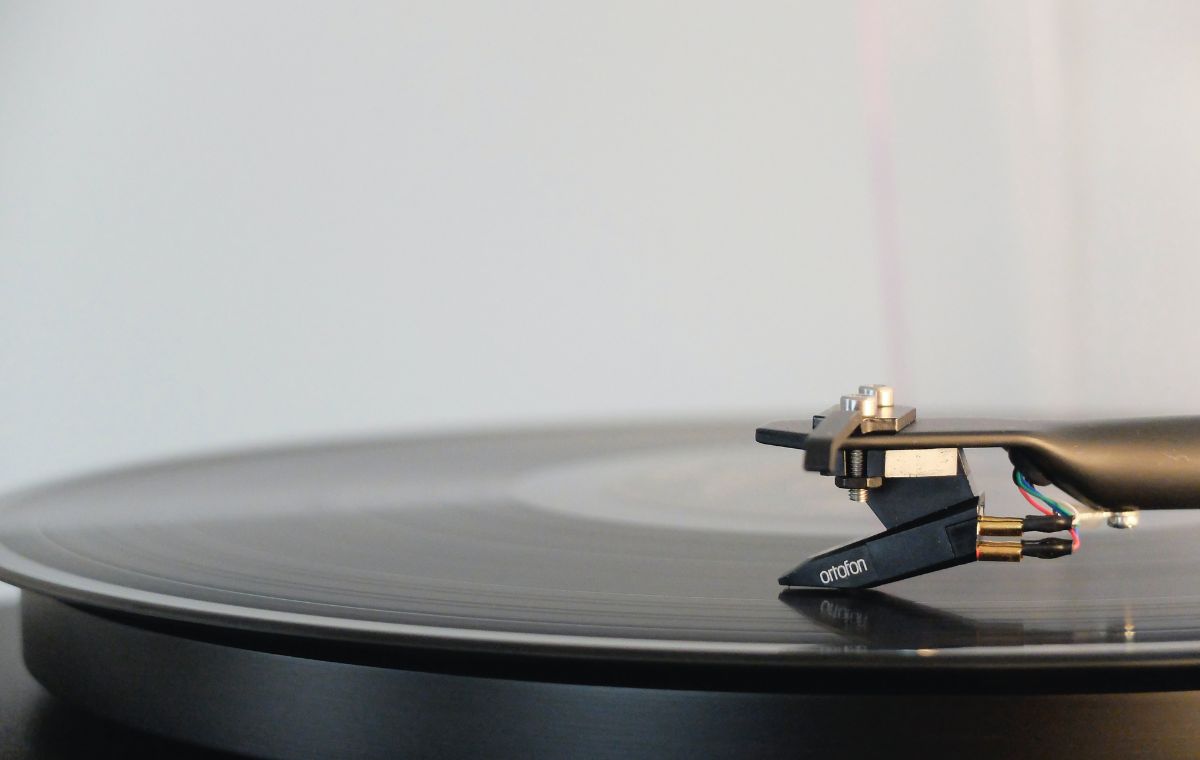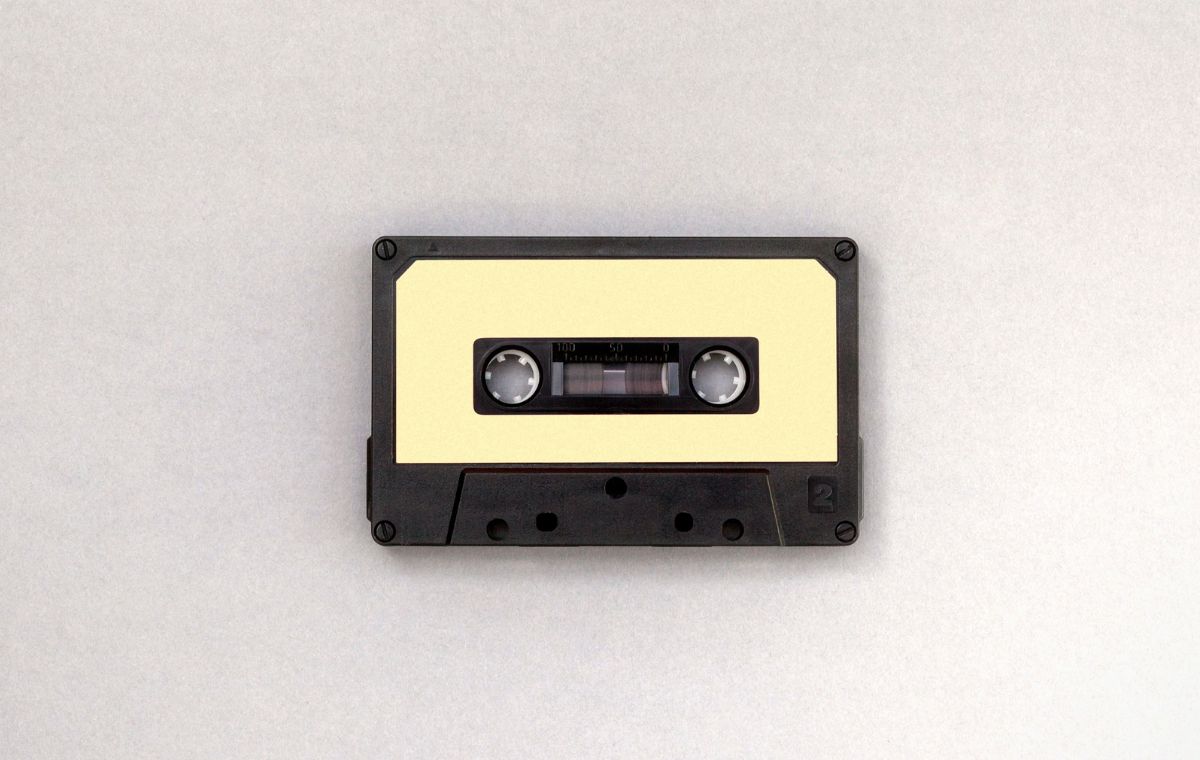Listen to Podcast:
Music production is an incredibly versatile field that can be used for a wide variety of purposes. Whether you’re looking to create music for your own use, or to sell it to others, learning how to produce music will be a valuable asset. In this article, we’ll provide you with everything you need to get started. We’ll cover the basics of music production, as well as some more advanced techniques. By the end of this guide, you’ll be able to produce great-sounding music without any prior experience.
The Basics of Music Production

There are a few basics you need to know before starting to produce music. Firstly, you need to understand the concept of sound waves and how they work. Secondly, you need to be able to use a digital audio workstation (DAW) like Ableton Live or Logic Pro. And lastly, it’s helpful if you have some knowledge of music theory so that you can understand chords and progressions. With these basics in mind, you’re ready to start learning music production!
The Different Types of Music Production

There are four main types of music production: live, recorded, electronic, and experimental. Each type has its own set of skills and equipment. Live music production is the process of creating a live performance. This can involve anything from setting up and running sound reinforcement to mixing a live band. Recorded music production is the process of creating a recorded performance. This involves everything from recording instruments and vocals to mixing and mastering a finished track. Electronic music production is the process of creating an electronic performance. This can involve anything from programming synthesizers to sequencing drums. Experimental music production is the process of creating any kind of non-traditional musical performance. This could involve anything from using found sounds to generating new sounds with computers
The Equipment you Need to get started
In order to get started with music production, you will need a few key pieces of equipment. Firstly, you will need a computer that is powerful enough to run the music production software of your choice. Secondly, you will need a MIDI keyboard or controller, which is an input device that allows you to control the various parameters of your software. Finally, you will need some sort of audio interface, which is how your computer will connect to speakers or headphones so that you can hear the results of your work.
The Software you Need to Get Started
Now that you know the basics of music production, it’s time to start putting them into practice. But before you can do that, you need to equip yourself with the right tools. In this section, we’ll introduce you to some of the software you’ll need to get started in music production.
How to Record your Music?

Now that you know the basics of music production, it’s time to start recording your own music. The first step is to choose the right recording software for your needs. There are a number of different options available, so do some research and read reviews to find the one that’s right for you. Once you have your software set up, you’ll need to create a new project and import any audio files or MIDI tracks you want to use. Then, simply hit record and start capturing your musical ideas.
How to mix your music?
Now that you’ve recorded and edited your music, it’s time to mix it. This is where you’ll adjust the levels of each track, add effects, and generally make everything sound good together. The mixing process can be complex, but there are a few basics that every producer should know. First, start by setting the levels of each track so they’re balanced with each other. You don’t want any one track to be too loud or too quiet in relation to the others. Next, add EQ to each track to shape its sound. For instance, you might want to boost the low frequencies on a kick drum or cut the high frequencies on a lead vocal. Finally, add effects like reverb and delay to create a more polished sound. Mixing can take some time to get right, but it’s worth putting in the effort. A well-mixed song will sound much better than one that’s poorly mixed.
How to Master your Music?
Mastering is the process of taking your final mix and preparing it for release. The goal of mastering is to balance the levels of your track, optimize the sound for different playback systems, and generally make it sound as polished and professional as possible. Mastering can be done using software or by sending your track to a mastering engineer.
What is music Production?
Music production is the process of creating a recorded music project. This can be anything from a simple demo recording to a full-fledged album. The music producer is responsible for overseeing all aspects of the recording process, from pre-production (planning) to post-production (editing and mastering). In some cases, the producer may also play an instrument or sing on the recording.
The Basics of Music Production
If you want to learn music production, the first step is to understand the basics of music production. This includes learning about digital audio, MIDI, synthesis, and more. Once you have a solid foundation in these concepts, you can move on to more advanced topics like sound design, mixing, and mastering. While there are many different ways to learn music production, the best way is to find a course or tutorial that covers all the basics in one place. That way, you can be sure you’re not missing anything important.
Advanced Music Production Techniques
There are many advanced music production techniques that you can learn to take your productions to the next level. Here are 10 of the most popular:
- Sampling: This technique involves recording a sound or phrase and then using it in your track. This can add unique character and texture to your music.
- Layering: This involves combining multiple sounds or instruments to create a fuller, richer sound.
- EQing: This involves using an equalizer to adjust the frequencies of a sound or instrument. This can be used to make a sound brighter, darker, thinner, etc.
- Compression: This is a technique that’s used to even out the dynamics of a sound or instrument by reducing the loudest parts and boosting the quietest parts.
- Reverb: This is an effect that’s added to simulate the natural reverberation of an acoustic space like a room or hall.
- Delay: This is an effect that simulates an echo by repeating the signal at various intervals.
- Flanging: This is an effect created by mixing two identical signals together, but with one signal delayed slightly relative to the other signal.
- Phaser : This is an effect
How to get Started in Music Production?
If you want to learn music production, the first step is to find a DAW that suits your needs. A DAW, or digital audio workstation, is the software you’ll use to create and produce your music. Once you’ve chosen a DAW, it’s time to start learning the basics of music production. This includes understanding how to use virtual instruments, record audio, mix and master your tracks, and more. While it may seem daunting at first, there are plenty of resources available to help you get started with music production. There are online courses, YouTube tutorials, books on the subject, and more. With a little bit of effort, you can quickly start learning music production and begin creating your own songs in no time.
Introduction to Music Production
Music production is the process of creating a recording of a song or piece of music. This can involve anything from recording a live performance to creating new work from scratch using synthesizers and other electronic instruments. In order to learn music production, you will need to have some basic knowledge of how music works and be able to use musical notation. You will also need access to a computer with music production software, such as Pro Tools or Logic Pro.
The Basics of Music Production
Now that you know the basics of music production, it’s time to learn the basics of producing music. This includes learning how to use a digital audio workstation (DAW), how to record and edit audio, and how to mix and master your tracks. While there is a lot to learn, these concepts are relatively easy to understand and can be mastered with some practice. In addition, there are plenty of resources available online that can help you further your understanding of each topic. With some dedication and effort, you’ll be well on your way to becoming a proficient music producer in no time.
More advanced music production Techniques

Now that you’ve learned the basics of music production, it’s time to move on to more advanced techniques. One common technique is sidechain compression, which is used to create pumping effects. To do this, you’ll need to compress a track and then send its signal to the sidechain input of another track. When the second track plays, it will be modulated by the first track, creating a unique effect. Another advanced technique is sound design, which involves creating new sounds from scratch using synthesizers and other tools. This can be used to create anything from atmospheric pads to complex basslines. If you’re interested in learning more about music production, check out our course on how to produce music like a pro!
How to get Started with Music Production?
Before you start learning music production, it’s important to have some basic knowledge of music theory. This will help you understand the concepts you’ll be working with as you produce your own tracks. You don’t need to be a music theory expert, but knowing things like the difference between a major and minor chord can be helpful. Once you have a handle on the basics, you can start experimenting with different sounds and effects using a digital audio workstation (DAW). There are many different DAWs available, so do some research to find one that suits your needs. When you’re first starting out, it’s often helpful to use pre-made samples and loops instead of trying to create everything from scratch. As you become more comfortable with the software, you can start incorporating your own recordings and samples.
Advanced Music Production Techniques
As you become more comfortable with the basics of music production, you may want to start exploring some advanced techniques. Here are a few to get you started:
- Sidechain compression: This technique is often used in electronic dance music to create pulsing, rhythmic effects.
- Sampling: Sampling involves recording and manipulating short snippets of audio to create new sounds.
- Synthesis: Synthesis is the process of creating new sounds using oscillators and other sound-generating devices.
- MIDI: MIDI (Musical Instrument Digital Interface) is a protocol that allows electronic musical instruments and computers to communicate with each other.
- Audio effects: Audio effects can be used to change the way a sound is perceived by the listener, such as making it sound louder, softer, longer, shorter, etc.
More Advanced Music Production Techniques
Now that you’ve learned the basics of music production, it’s time to start exploring some more advanced techniques. If you’re interested in learning how to produce professional-sounding tracks, here are a few things you can try:
- Start experimenting with different sound effects and plugins.
- Use sidechain compression to create pumping basslines.
- Add reverb and delay to create atmospheric pads and textures.
- Layer different sounds and samples to create richer, more complex tracks.
- Record your own vocals or other live instruments for use in your productions.
- Learn how to mix and master your tracks so they sound polished and professional. 7. Experiment with different genres and styles of music production to find your niche
If you are interested
You can also read: The Magicians Season 6, Star Wars Andor Season 2, Adult Video Chat Industry, Magic Mike 3, Thunderbolts, Altered Carbon Season 3, Best Gerard Butler Movies, Top 3 Places to Visit in India, Reaper 2 Trello, Hasbulla Magomedov Net Worth, The Flash season 9, Enola Holmes 2, Locke and Key Season 4, Amazon Prime November 2022 Schedule, Holding Season 2, Hannah Kepple net worth, Coby Bell net worth, Quiet BPD, PCNOK, Dana Perino Net Worth, The Conjuring 4, Henry Cavill Style, Best Movies on Star+, Andrew Tate net worth, Jack Ryan Season 3, Riverdale Season 7, Guardians of the Galaxy Christmas Special Cast, Knock at the Cabin, Top Disturbing Movies on HBO Max, Let The Right One In, Mr. Harrigan’s Phone Netflix, Alia Bhatt on Dimple Kapadia,
Also, you can read
Best Thriller Series on Netflix, Google Pixel Buds Pro, The Rings of Power: Elves, Olivia Colman Movies, The Legend of Zelda: Tears of the Kingdom, Kengan Ashura Season 3, iZombie Season 6, Knives Out 2, Couchtuner, Openload, The Rings of Power: Who is Theo, Wcoforever, Andor Star Wars Cast, Vikings Season 7, Movies with Fainting Scenes, TweakDoor, Best Crime Series of the 21st Century.
Amazon Prime Release Date September 2022, The Rings of Power Villain, Dynasty Season 6, Gramhir, F2Movies, Elton John and Britney Spears, Realistic Driving Games, 5movies, MetaZoo, SmiHub. Homewyse, Best Inspirational Movies, Saddest Movies, Black Mirror season 6, Tatiana Maslany, Who is Alicent Hightower, Baki Season 5, Thor, Love and Thunder, Best Sebastian Stan Movies, Daredevil Season 4, Best Ben Affleck Movies, Instastories, Latina Creators on Disney+, Overlord Season 5, Satanic Panic Movie, iOS 16 Beta, 6streams, 8 Nazi Hunters Movies, Streameast, Best Grail Watches, Emerald Chat, 365 Days 3, House of the Dragon, IFVOD, NFL Streaming Sites, Google TV App, Meta Launches, AniMixPlay, and Jilo Virals.

















